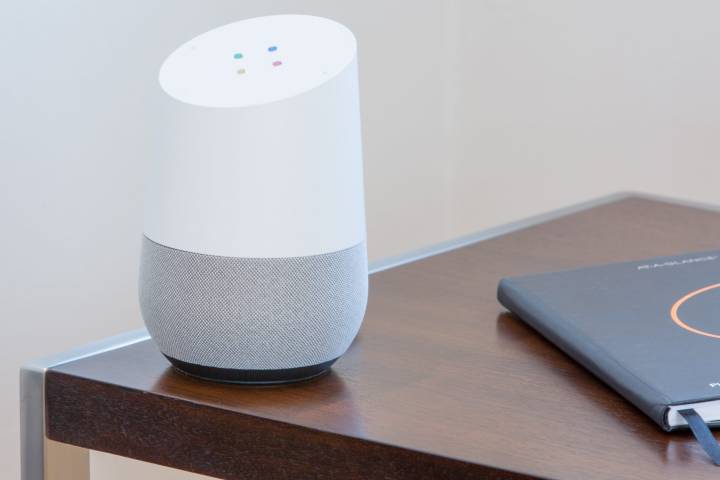
Modern home automation has a fancy name called a smart home. It is no longer just a trending buzzword. It represents the biggest reality of our time. Without smart connected gadgets nowadays, it is impossible to think of a modern home that looks and feels elegant. But this intelligent reality of home automation is made possible thanks to several key technologies such as the Internet of Things (IoT), cloud computing, Artificial Intelligence (AI), mobile apps and voice assistants.
Here we will uncover these constituent technologies of the smart homes and the way they are making home automation possible. While these technologies make our homes more stylish, they are slowly playing a bigger role in making everything in our daily lives smarter. These technologies have penetrated every nook and corner of our lives, from smart workplaces to smart vehicle automation to smart connected public spaces.
So, in the context of your home interior, you can call this ecosystem of connected gadgets a smart home. But in the broader context and less fanciful terms, it can be called connected reality. It’s a reality where everything remains connected allows us to perform tasks and use different interfaces with ease that cannot be dull, and hence this coinage of “smart” seems to be quite appropriate.
Mobile Still Has a Big Stake in the Smart Connected Reality
Before even artificial intelligence (AI) or machine learning became mainstream in everyday gadgets, mobile apps worked like remote control units to operate our connected electronic gadgets. So, modern smart homes started with mobile apps and eventually became more hi-tech with the emergence of other technologies.
Some countries with faster digital adaptation have made deeper penetration in mobile app led innovations for smart gadgets. Mobile app developers from India hold a unique place for their innovative power in connecting a lot of new smart home gadgets with mobile apps.
The Increasing Use of AI in Smart Homes
The emergence of smart assistants and smart speaker systems has enabled the emergence of intelligent automation. All major tech companies, including Amazon, Google and Apple, now have their own smart speaker systems equipped with smart voice assistants. With the use of AI and machine learning technology, all of them can assess our queries, give replies and offer solutions.
From Apple Siri to Amazon Alexa to Google Assistant, all AI-driven smart home virtual assistants are increasingly making our lives easier by taking control of most of our home gadgets. “Alexa, it’s too hot inside” – as soon as you finish uttering this, Alexa starts lowering the room temperature by turning on the connected AC unit. That’s how intelligent home automation is made to understand human requests and respond accordingly.
IoT is Pretty Much Everywhere
The Internet of Things (IoT) has now become a fun thing for aspiring gadget makers who are attracted to new innovations. New startups based on IoT based innovations are all the rage, and they are making big success stories with popular crowdfunded ventures.
Things are changing pretty fast thanks to the reality of connected gadgets, from the connected coffee machine to the connected doorknobs that trigger an alarm with an odd behaving stranger at the doorstep. The scope of innovations with this connected reality is enormous.
A connected spoon tracks your calorie consumption in real-time before sending the data to the health tracker app. There is a connected surveillance camera to book an Uber ride as soon as you finish your meal before heading for the workplace. A connected heart monitor and health tracker keeps sending you real-time health data about your parents when you are away from home.
The Role of Voice Assistants in the Smart Home Reality
At an increasing pace, voice assistants are taking center stage in this fast-evolving IoT scene. Voice assistants are making contributions to the growth and proliferation of IoT in these two major ways: quick voice commands that are easily understood by machines with the help of natural language processing (NLP) technology, and intelligent replies and suggestions based on user intent and previous user data.
Chatbots represent another major facet of the voice assistants that already have become part and parcel of digital platforms and online apps. Modern in-app chatbots that, apart from replying to queries with text answers, can respond with spoken replies have made IoT devices smoother and more streamlined.
Lastly, voice interactions with connected devices, chatbots, and other interfaces continue to get smarter and more effortless thanks to a plethora of innovative technologies like voice recognition, NLP, speech synthesis, etc.
Conclusion
We have explained the major stakes of key technologies that are making smart connected reality possible. While all of them already look pretty impressive and long-lasting in their impact and transformative power, intelligent home automation is continuing to evolve. The smart connected gadgets of future years will be more context-driven and responsive to human situations than now.
We hope you found this blog post on How AI, IoT and Mobile Apps Help in Creating Successful Home Automation Systems, useful. Be sure to check out our post on 10 Home Technologies That Can Make Your Life Easier and Safer for more great tips!
Have Experience in the Moving Industry? Want an Additional Income Stream? Work With All Around Moving!
Partner with us and we’ll help you make money. Click here to learn more.





